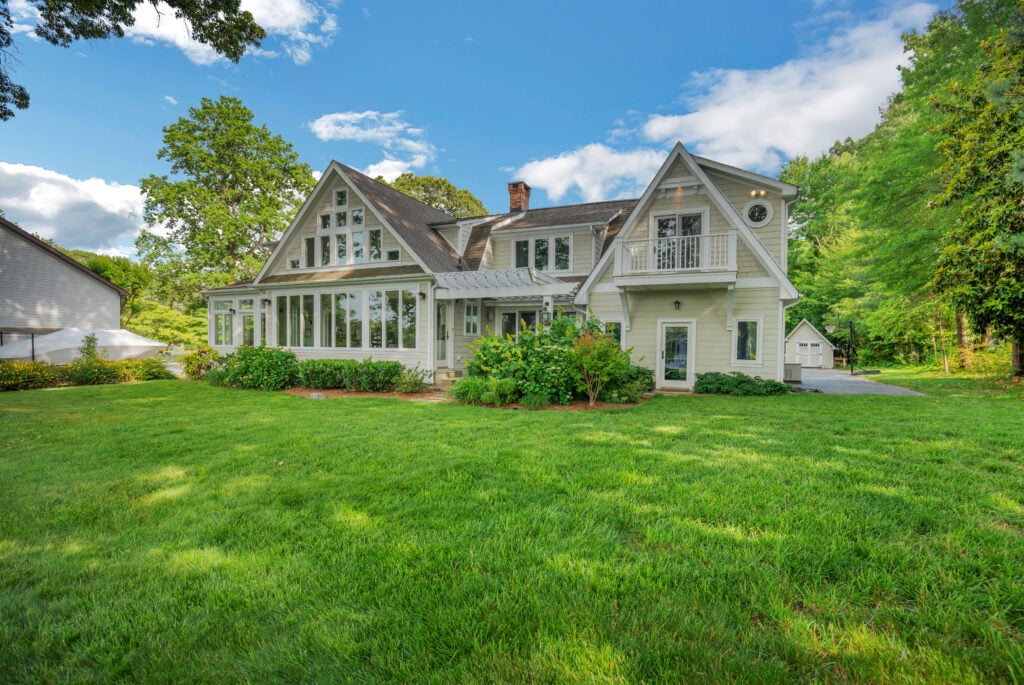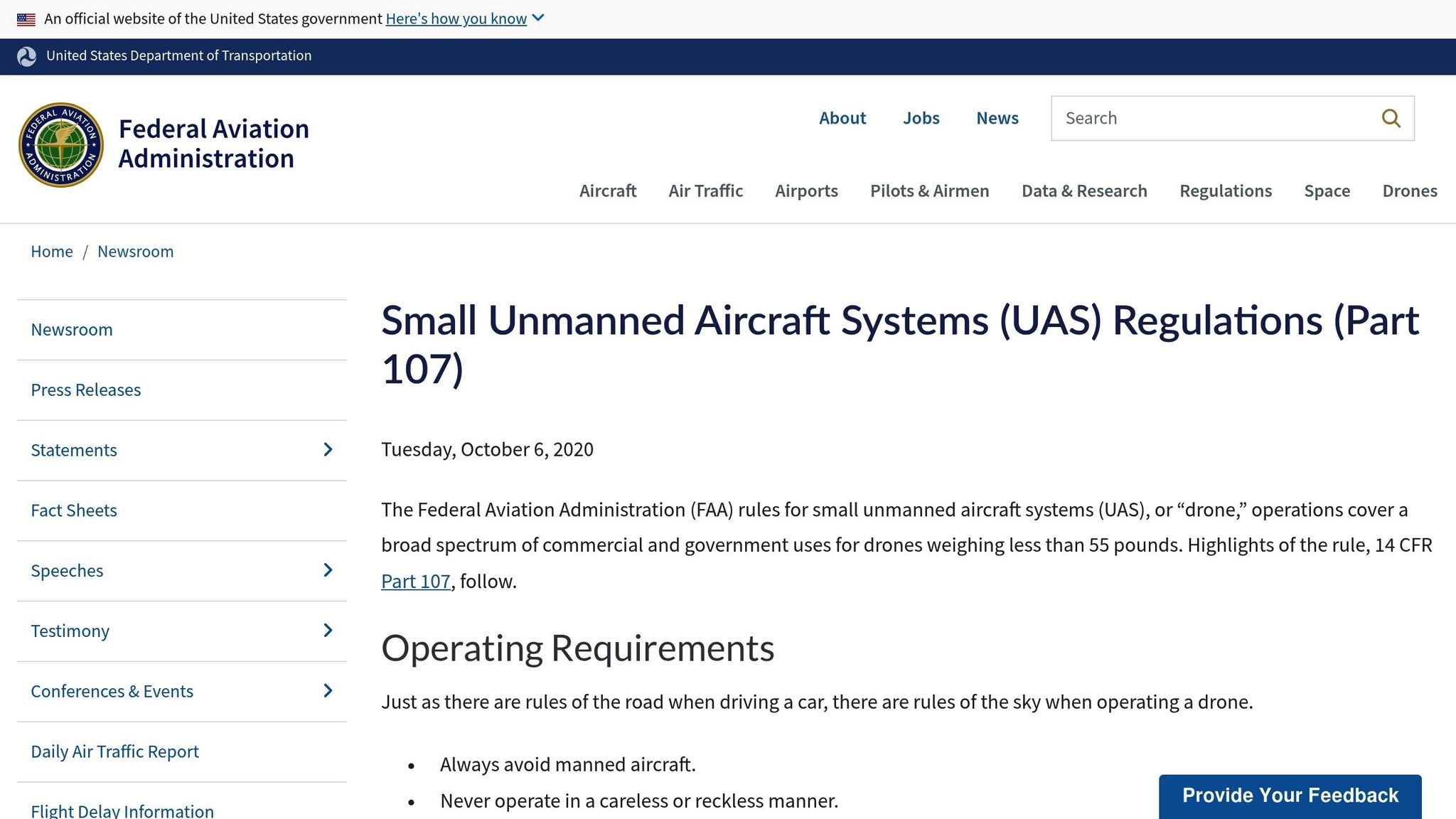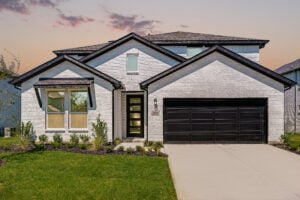Using drones for real estate in Illinois? Here’s what you need to know:
- Get Permission: Always secure written consent from property owners and anyone visible in your footage.
- Follow FAA Rules: Obtain Part 107 certification, register drones over 0.55 lbs, and avoid no-fly zones.
- Respect Privacy: Don’t film private spaces or identifiable individuals without consent.
- Comply with BIPA: If collecting biometric data (e.g., facial recognition), ensure written consent and secure handling of the data.
- Plan Flights Carefully: Use geofencing, maintain visual line of sight, and avoid restricted airspace.
Key Tip: Keep detailed records of permissions, flight logs, and certifications to stay compliant and avoid penalties.
Illinois Drone Laws for Real Estate
Property Owner Rights
Property owners have specific rights when it comes to drone activity over their land. They can:
- Limit or prohibit drones from flying over their private property.
- Demand the removal of aerial footage taken without permission.
- Take legal action if drone operators violate privacy laws.
BIPA Requirements
The Illinois Biometric Information Privacy Act (BIPA) applies if drones collect biometric data. Under this law, operators must:
- Get written consent before capturing biometric identifiers like facial data.
- Store, manage, and delete biometric information securely and in compliance with BIPA guidelines.
FAA and Local Regulations
Drone operators in Illinois must follow federal and local rules, including:
- Holding an FAA Part 107 certification and registering drones weighing more than 0.55 pounds. They must also avoid flying in FAA-designated no-fly zones, such as near airports.
- Securing local permits, carrying necessary insurance, and respecting areas with flight restrictions.
Up next, learn about Illinois’ privacy laws for drone photography.
Privacy Rules for Drone Photography
Privacy Concerns
Using drones for photography can raise privacy issues, especially in cases like:
- Filming identifiable individuals on private property without their consent.
- Recording through windows into private spaces.
To avoid these problems, always get the necessary permissions before taking flight.
Permissions to Secure
- Written consent from property owners.
- Signed releases from anyone appearing in the footage.
- Approval from homeowners associations or compliance with local rules.
Steps to Minimize Risks
- Plan Ahead: Map out flight paths and set camera angles to focus only on the intended property.
- Keep Records: Maintain documentation like consent forms, flight logs, permits, and certifications.
- Use Tech Safeguards: Implement tools like geofencing, altitude limits, and specific camera settings to steer clear of sensitive areas.
Can I Fly My Drone In My Neighborhood?
Drone Operation Requirements
Operating drones for real estate purposes in Illinois involves more than just getting the necessary permissions. Drone operators must adhere to specific guidelines to ensure compliance with state and federal laws.
Step-by-Step Legal Drone Operation
Once permissions are in place, operators should follow these steps:
- Verify FAA Part 107 certification and drone registration: Ensure the operator is certified and the drone is registered with the FAA.
- Conduct a pre-flight risk assessment: Check weather conditions, airspace restrictions, and potential obstructions.
- File local and municipal permits: Submit any required paperwork for the area where the drone will be flown.
- Inspect equipment and calibrate sensors: Confirm that all equipment is in proper working order before takeoff.
- Establish radio contact with nearby airports: If operating in controlled airspace, notify air traffic control.
- Maintain visual line of sight and proper altitude: Keep the drone within view and below 400 feet.
- Log flight details after landing: Record information about the flight for compliance and record-keeping.
Do’s and Don’ts of Drone Use
Legal Practices:
- Fly below 400 feet above ground level (AGL).
- Stay at least 5 miles away from airports unless you have air traffic control (ATC) approval.
- Respect property boundaries and secure written permission from property owners.
- Follow Illinois’ Biometric Information Privacy Act (BIPA) regulations.
- Maintain a clear visual line of sight at all times.
- Keep detailed flight logs for every operation.
Illegal Practices:
- Hover over private property without consent.
- Enter restricted airspace without authorization.
- Collect biometric data without following BIPA requirements.
- Conduct night flights without obtaining the necessary waiver.
- Operate beyond the visual line of sight.
- Fly over people without proper authorization.
- Ignore temporary flight restrictions in the area.
Up next, see how HomeJab’s certified operators ensure full compliance with these requirements.
HomeJab‘s Drone Photography Services
HomeJab ensures compliance with Illinois drone and privacy laws by connecting you with local drone operators who deliver high-quality aerial photos and videos in just 24 hours.
Professional Drone Operators
HomeJab works with experienced local photographers who specialize in providing ready-to-use drone footage.
Service Features
- Fast Turnaround: Delivery within 24 hours
- Aerial Photos: 10–15 professional shots
- Video: Custom property footage
- Nationwide Coverage
- Pricing: $249–$499
- Extras: Includes MLS-ready and branded property pages
All operators are FAA Part 107 certified, carry the necessary insurance, and adhere to BIPA guidelines while on location.
Summary
Get property-owner consent, follow BIPA and FAA rules, plan safe flight paths, and keep detailed records. Work with drone operators who meet these standards to boost your marketing efforts.
HomeJab connects real estate professionals with FAA Part 107-certified drone operators who create aerial media compliant with FAA, BIPA, and Illinois privacy laws.
Key compliance steps include:
- Property Rights: Obtain clear consent from property owners and HOAs.
- Regulatory Compliance: Adhere to BIPA guidelines and FAA regulations.
- Safety Protocols: Conduct pre-flight checks and minimize risks.
- Documentation: Keep thorough records of permissions and flight details.












